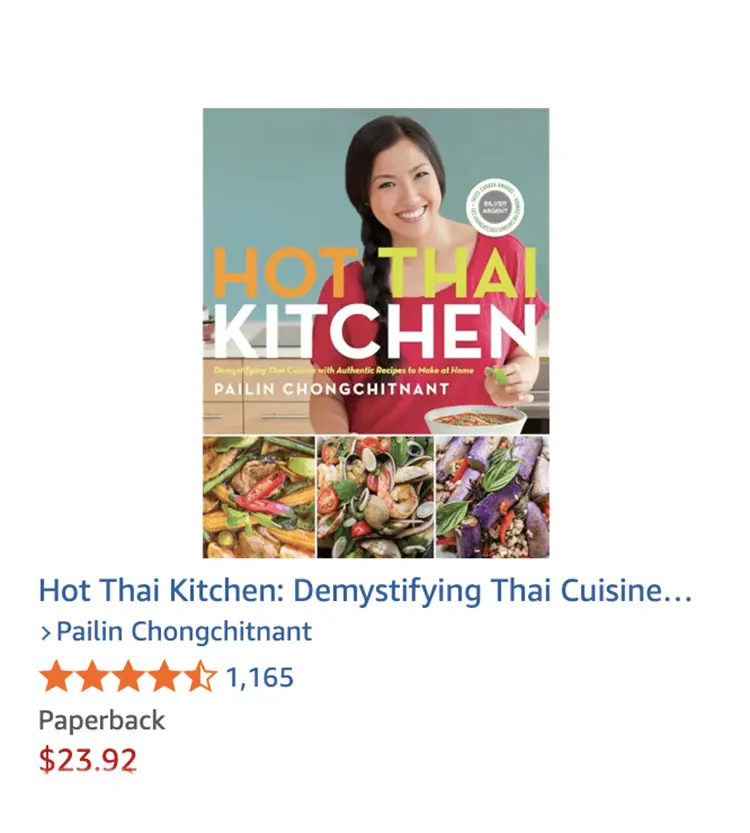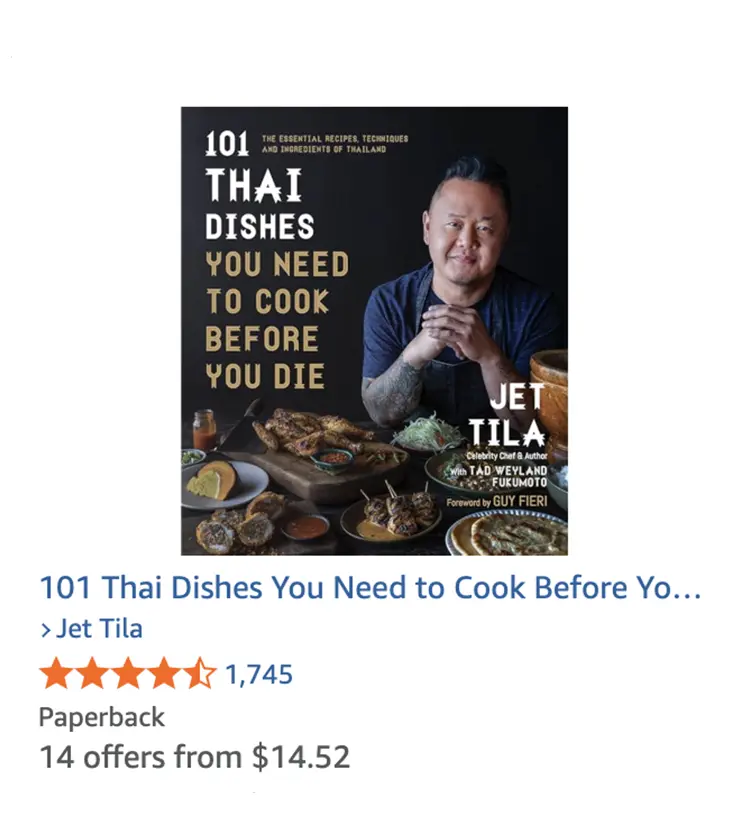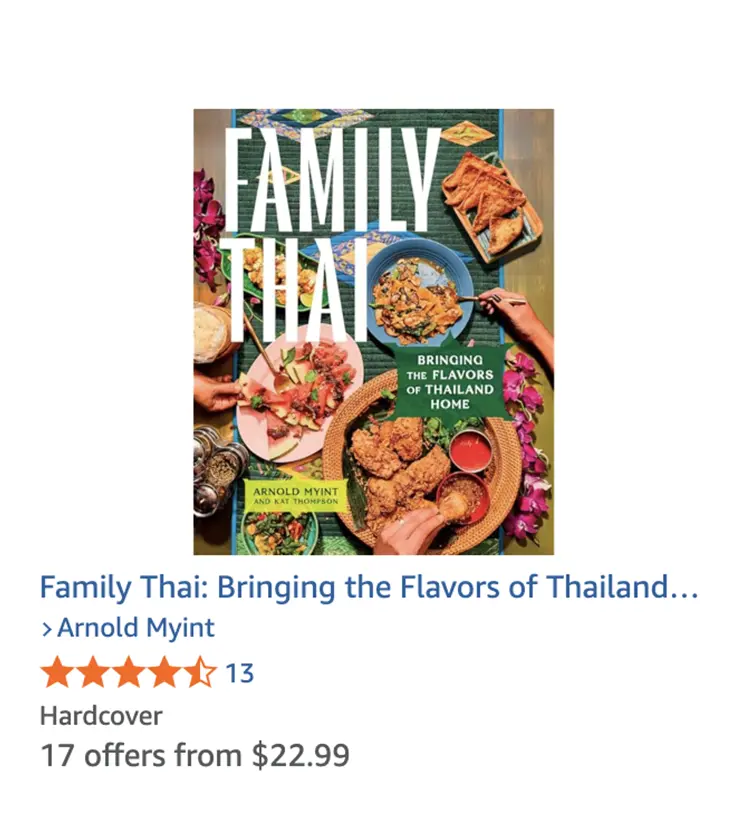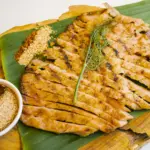The Ultimate Paleo Panang Curry: Authentic Flavor, Clean Ingredients 🥥🌶️
Welcome, health-conscious food lovers! If you’ve been searching for a Thai Panang Curry recipe that delivers the complex, creamy, and undeniably luxurious flavor of your favorite takeout—but is completely Paleo and Whole30-compliant—your search ends here.
- Panang: The Goldilocks Curry of Thailand
- The Paleo Transformation: Making Panang Compliant
- The Big Swap: Nut Butter and Thickener
- The Paste Check: Avoiding Hidden Ingredients
- The Umami Source: Fish Sauce and Sweetener
- Ultimate Paleo Panang Chicken Curry Recipe
- Customization and Paleo Serving Guide
- Paleo Panang Curry FAQs
- Q: My sauce is too thin! How do I thicken it the Paleo way?
- Q: Where can I find Kaffir Lime Leaves? Are they essential?
- Q: How do I ensure my curry paste is genuinely Paleo?
- Q: What is the difference between Panang and Red Curry Paste?
- Final Verdict: The Clean Way to Thai Comfort
Panang curry is Thailand’s culinary secret weapon. It’s the “Goldilocks” curry: richer and thicker than Green Curry, yet more fragrant and less sweet than Massaman. Its signature is a velvety, nutty sauce that perfectly clings to tender protein and vegetables.
Our guide will take you beyond basic substitutions, teaching you the authentic Thai technique of blooming the paste and introducing smart, grain-free swaps that preserve the incredible depth of flavor. Get ready to master this 30-minute weeknight showstopper, proving that you never have to sacrifice flavor for clean eating.
Panang: The Goldilocks Curry of Thailand
To truly appreciate the Paleo version, we must first understand the magic of authentic Gaeng Panang.
The Three Defining Elements of Authentic Panang
Panang stands out in the Thai curry family for its meticulous focus on richness and aroma:
- The Thickness (Reduced Coconut Cream): Traditional Panang is never watery. It uses the thick coconut cream skimmed from the top of the can and is simmered until the sauce becomes “muddy,” meaning the coconut oil separates slightly, creating a glossy, concentrated sauce that sticks to the meat.
- The Nutty Depth (Peanuts/Nut Butter): While all curries share base ingredients, Panang paste is unique for its inclusion of ground peanuts or a heavy dose of cumin and coriander. This gives it a deep, earthy, nutty undertone—the flavor profile we achieve through our Paleo-friendly almond butter substitute.
- The Aromatic Finish (Kaffir Lime): A non-negotiable element. The curry is intensely flavored with fresh, finely sliced kaffir lime leaves stirred in right at the end. This zesty, citrus aroma is the signature aromatic note that cuts through the coconut richness.
The Flavor Profile: Mild, Rich, and Balanced
Unlike the fiery heat of a typical Green Curry, Panang is generally milder and sweeter. Its goal is balance: a harmony of rich coconut, aromatic spices (galangal, lemongrass), savory umami (fish sauce), and a subtle sweetness (palm sugar/coconut sugar). This approachable flavor makes it a huge favorite for those new to Thai cuisine.
The Paleo Transformation: Making Panang Compliant
Adapting an authentic Thai recipe to meet the Paleo or Whole30 standards involves careful ingredient sourcing, primarily focused on eliminating added sugar, non-compliant oils, and peanuts.
The Big Swap: Nut Butter and Thickener
The creamy, nutty texture is fundamental. Since peanuts are legumes and non-compliant, we use an essential substitution:
- Almond Butter: Unsweetened almond butter is the best Paleo swap for traditional peanuts. It provides the same rich, creamy body and essential nutty flavor without compromising the diet.
- Nut-Free Option: If you are avoiding all nuts, unsweetened sunflower seed butter or tahini (in small quantities for flavor) can provide a similar thickening and earthy effect.
- Starch-Free Thickening: For a truly thick sauce without flour or cornstarch, rely on the full-fat coconut milk and extended simmer time. If extra thickening is needed for a Paleo recipe, a small amount of arrowroot powder or tapioca starch mixed with water can be added as a slurry.
The Paste Check: Avoiding Hidden Ingredients
Store-bought curry paste is the easiest way to make this dish, but it’s often the source of non-compliant ingredients.
| Non-Compliant Ingredient | Where It Hides | The Paleo Fix |
| Sugar/Dextrose | Often the second or third ingredient in major brands. | Look for specialized Paleo/Whole30 brands, or buy raw paste ingredients and grind them yourself. |
| MSG/Preservatives | Added for flavor enhancement and shelf stability. | Choose authentic Thai brands like Mae Ploy or Maesri, but verify their ingredients—or again, look for clean specialty brands. |
| Vegetable Oils | Used as binders in some commercial pastes. | Look for pastes made with coconut oil or simply the base spices. |
| Legumes | Some Panang pastes use ground beans instead of peanuts to thicken. | Stick to clean brands and use your own almond butter for thickening to control the source. |
The Umami Source: Fish Sauce and Sweetener
- Fish Sauce (The Umami Heart): Fish sauce is essential. Ensure your brand only contains anchovies, salt, and water. For a vegan/soy-free option, substitute with coconut aminos mixed with a pinch of salt to achieve the savory depth.
- Sweetener: Instead of traditional white or palm sugar, use coconut sugar, date paste, or simply omit the sugar for a savory, low-carb dish.
Ultimate Paleo Panang Chicken Curry Recipe
This recipe uses chicken (Gai) but is easily swapped for beef (Nuea) or shrimp (Goong).
Recipe Ingredients
| Component | Item | Quantity | Notes (Paleo/Whole30) |
| The Base | Full-Fat Coconut Milk (unshaken) | 2 x 13.5 oz cans | Use the cream layer to start the curry. |
| Panang Curry Paste (Paleo-compliant) | 3-4 Tbsp | Adjust to your spice preference. | |
| Unsweetened Almond Butter | 2 Tbsp | Essential for thickness and nutty flavor. | |
| Fish Sauce (or Coconut Aminos) | 2 Tbsp | Adjust to taste for savory saltiness. | |
| Coconut Sugar (or date paste) | 1-2 tsp | Optional, for balance. | |
| Protein & Aromatics | Boneless, Skinless Chicken Breast | 1.5 lbs | Sliced thinly against the grain. |
| Coconut Oil | 1 Tbsp | For browning the chicken. | |
| Onion (Yellow or Shallot), finely chopped | 1/2 medium | Sautéed until soft. | |
| Red Bell Pepper, chopped | 1 | Adds color and mild sweetness. | |
| Garlic, minced | 3 cloves | Added late to prevent burning. | |
| The Aromatic Finish | Kaffir Lime Leaves | 6-8 leaves | Crushed slightly to release aroma. Non-negotiable. |
| Fresh Thai Basil Leaves | 1/2 cup | Stirred in at the very end. | |
| Fresh Lime Juice | 1 Tbsp | Added just before serving for brightness. |
Step-by-Step Technique: The Blooming Method
- Prep the Chicken and Aromatics: Slice chicken thinly. Finely chop the onion, bell pepper, and mince the garlic. Gently crush the kaffir lime leaves to release their potent oils.
- Bloom the Paste (The Golden Rule): Open the coconut milk cans without shaking. Scoop the thick layer of coconut cream (about 1/4 cup) into a large, heavy-bottomed skillet or Dutch oven over medium heat. Add the Panang Curry Paste. Fry, stirring constantly, for 3-5 minutes. The paste must be cooked in fat until fragrant and the coconut oil starts to separate and sizzle—this deepens the flavor.
- Sauté Vegetables: Add the coconut oil, then the onion and red bell pepper. Sauté until softened (about 5 minutes). Add the garlic and sauté for 30 seconds (do not burn).
- Build the Sauce: Pour in the remaining coconut milk, almond butter, fish sauce, and coconut sugar. Whisk thoroughly until the almond butter dissolves completely. Add the crushed kaffir lime leaves. Bring to a gentle simmer and cook for 15 minutes to allow the flavors to marry.
- Add and Simmer Protein: In a separate skillet, brown the chicken pieces on two sides. Transfer the browned chicken to the curry sauce. Continue to simmer gently for an additional 10 minutes until the chicken is cooked through and the sauce clings thickly to the pieces.
- The Finish: Remove from heat. Stir in the fresh Thai basil leaves and fresh lime juice. Taste and adjust for salt (more fish sauce) or sweetness (more coconut sugar/date paste).
Customization and Paleo Serving Guide
One of the benefits of Panang is how forgiving it is. Here’s how to tailor it to your preferences.
Protein and Vegetable Variations
- Beef Panang (Nuea): Use thinly sliced sirloin or flank steak. Sear it hard and slice against the grain.
- Shrimp Panang (Goong): Add the shrimp during the last 5 minutes of simmering, as they cook very quickly and overcooked shrimp are chewy.
- Vegetables (Paleo Friendly): The best additions are hard vegetables added early, such as broccoli florets, zucchini, sliced carrots, or green beans. Avoid soft, watery additions like large amounts of mushroom or eggplant, as they can thin the sauce.
Perfect Paleo Pairings
Forget rice and naan—this creamy curry deserves a vehicle that keeps the meal clean and satisfying.
- Cauliflower Rice: The ultimate low-carb accompaniment. Its texture mimics rice, and it soaks up the creamy Panang sauce beautifully.
- Zucchini Noodles (Zoodles): A fresh, light, and low-carb option. Serve them slightly al dente so they retain a pleasant crunch.
- Spaghetti Squash or Shirataki Noodles: Excellent grain-free noodle substitutes that hold up well under the thick sauce.
- Steamed Broccoli: Simply steamed or lightly roasted broccoli and bell peppers are a perfect, clean side dish that requires minimal effort.
Paleo Panang Curry FAQs
Q: My sauce is too thin! How do I thicken it the Paleo way?
A: The primary method is to simply simmer it longer, uncovered. If you need an instant fix, create a slurry by mixing 1 teaspoon of arrowroot powder or tapioca starch with 2 teaspoons of cold water. Slowly stir this slurry into the simmering curry until it reaches your desired thickness.
Q: Where can I find Kaffir Lime Leaves? Are they essential?
A: They are absolutely essential for the authentic Panang aroma. They are easiest to find in the freezer section of Asian grocery stores. They retain their flavor when frozen, so buy a bag and store them for future Thai curries!
Q: How do I ensure my curry paste is genuinely Paleo?
A: Look for small, specialty brands that list every ingredient and explicitly state “No Added Sugar” or “Whole30 Compliant.” If you use a traditional paste (like Mae Ploy/Maesri), assume it contains sugar and use it in smaller quantities, balancing the dish with less added sweetener.
Q: What is the difference between Panang and Red Curry Paste?
A: Panang paste is essentially a variation of Red Curry paste but often contains fewer chiles (milder heat) and, crucially, contains ingredients like ground peanuts (or cumin/coriander seeds) which give it its unique, nutty depth and distinguish its flavor profile.
Final Verdict: The Clean Way to Thai Comfort
Thai Paleo Panang Curry is the perfect meal prep dish and a luxurious weeknight favorite. It proves that eating clean doesn’t mean sacrificing the exotic, deeply comforting flavors you crave. By following the blooming technique and using compliant ingredients, you’ll master the art of this thick, nutty, and aromatic curry.
Toss the takeout menus and elevate your home cooking. Your perfect bowl of creamy, dreamy Panang awaits!













